To Gaddesden (on the trail of a turret clock, part 2)
This post was written by Dale Sardeson
In a recent post, On the trail of a turret clock, I began an account of my search for a clock by Allam & Caithness. Informed by the Thwaites archive transcription and investigation project that James Nye and Keith Scobie-Youngs have been working on, the trail led me to St. John-the-Baptist church in Great Gaddesden, Hertfordshire.
The website of the church reveals that indeed, their clock was given to them by Gaddesden Place in 1955.
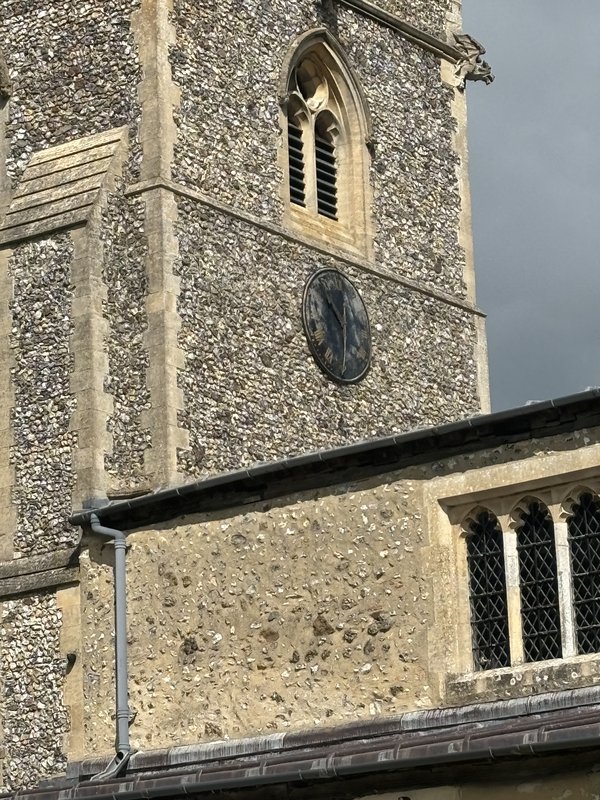
Another pointer from James Nye directed me to the website of Gaddesden Place, a house no longer in the Halsey family. From there I made contact with the current owner, who directed me to the following two photos of the North Wing, taken in 1898 and 1926 respectively. You can certainly make out the shape, if not the detail, of a clock dial above the main entrance to the wing.
The wing was demolished in 1955 owing to dry rot, and it was then that the clock was given to the parish church, with which the Halsey family have a long and close relationship.


I arranged a visit to the church, and one of the wardens, Peter King, kindly showed me into the tower. I was able to have a good look at the clock. It is an example of what Keith Scobie-Youngs has described as Thwaites’s ‘Ford Model T’ of turret clocks, with rack striking, gravity-arm maintaining power, and a recoil escapement with steel pallets affixed to a cast brass pallet frame, all housed within Thwaites’s characteristic green frame. It is signed for Allam & Caithness on the setting dial.
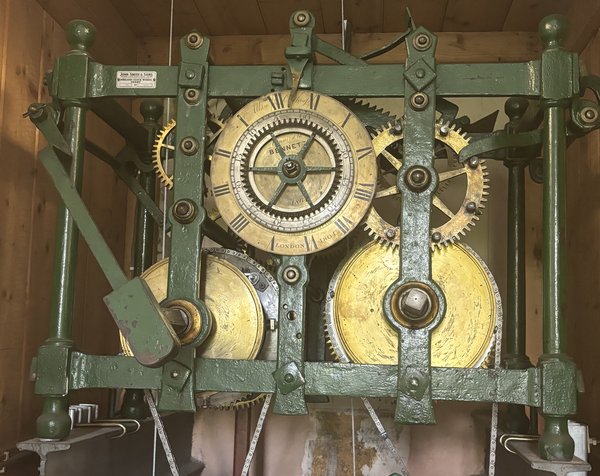
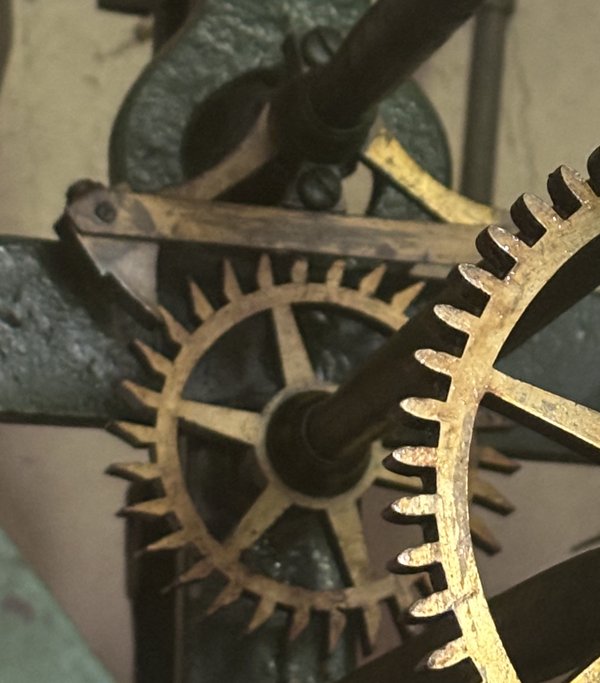
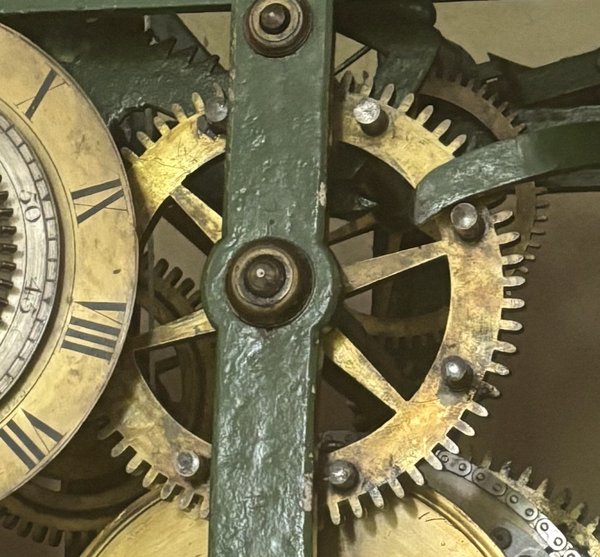

Besides the features of its construction, looking at the clock in person allowed me further glimpses into its history.
There are two inscriptions on the setting dial: ‘Repaird by Bennett 1864’, and ‘Cleaned & rebushed by J Steptoe 1925’. The latter would almost certainly be James Steptoe of 67 High Street, Hemel Hempstead, found listed as a watchmaker in a number of Kelly’s Directories for Hertfordshire through the late nineteenth and early twentieth centuries.
Bennett, however, is harder to place, being such a common name. It would be tempting to think it could have been Sir John Bennett of Cheapside – after all, it was a London firm rather than a local one whom the Halsey family had first commissioned for the clock’s supply. But there were several Bennetts in London it could have been at that time.
There is also a John Smith & Sons service plaque from 1955, so it appears it was they who carried out the installation of the clock into its new location at the church. Smith of Derby have continued to be involved in the care of the clock, fitting it with autowind units in 2016.
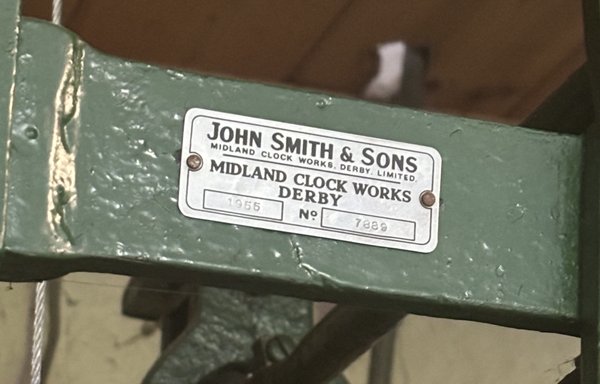
It is quite a joy to be able to trace a clock from its original written estimate right through to the present day, and I can’t wait to see what other stories have been revealed from the Thwaites Daybook project!